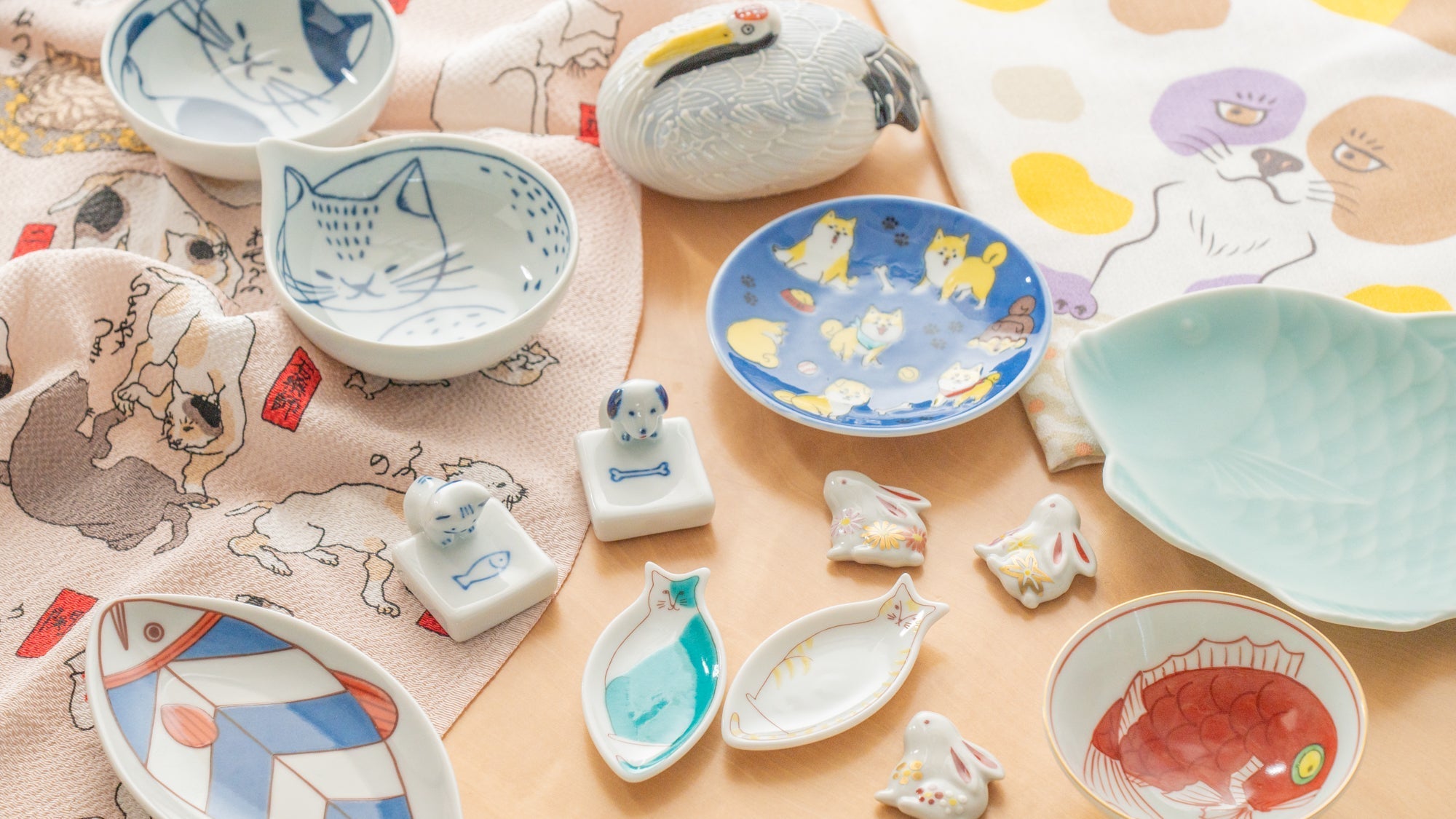
What Is the Meaning of Animals Painted on Japanese Tableware?
Written by Team MUSUBI
With the predominance of floral motifs and traditional patterns decorating Japanese tableware, it is worth noting that animal-themed designs are also worth exploring. The dishware can range from cute and creative to elegant and subtle, with the animals depicted carrying auspicious significance and rich cultural symbolism.
In Japanese culture, animals are often associated with specific seasons. A goldfish, for instance, is universally recognized as a visual symbol of summer in Japan, while a rabbit immediately brings to mind visions of otsukimi, or “autumn moon viewing.”
Many animals are linked to specific symbolic meanings, and incorporating them into your gift or table setting can evoke positive, well-wishing connotations. The phoenix and dragon are seen as harbingers of happiness, while the crane represents longevity.
Let us explore the most common animal motifs that appear on Japanese tableware to help you find your favorite.
table of contents
Neko-Cat Motif

Cats have become iconic symbols of Japan's kawaii, or "cute," culture, as demonstrated by characters like Hello Kitty. Whether they're playing, curled up, or peacefully sleeping, cats are charming in every pose, making them a popular motif in Japanese tableware designs. Additionally, the "Lucky Cat" figurine, traditionally placed in stores to attract prosperity and good fortune, has recently gained popularity as a decorative item for interiors.
The Japanese bobtail is a breed unique to Japan and is recognized by its distinct physical traits, including a slightly rounded face, medium build, thick limbs, and short hair. Characteristics like short or crooked tails, uncommon in the West, are relatively typical. One of the most appealing aspects of Japanese cats is their variety of coat colors—white, black, or rust-colored cats, tiger-striped or tortoiseshell cats, as well as cats with mixed patterns—each with its own unique personality.
Cats have long been treasured pets in Japan’s history. They were first kept by aristocrats and other select groups during the Heian period (794 CE–1185 CE). By the Edo period (1603 CE–1868 CE), cats became cherished pets, as evidenced by the numerous ukiyo-e woodblock prints in which they are depicted.
One reason cats were so highly valued was related to their diet. Unlike dogs, which are omnivores, cats are strict carnivores. Historically, Japan had little tradition of consuming animal protein, and aside from catching rats, the primary source of protein available to cats was fish. This is why cats in Japan are often associated with a love for fish.
After World War II, as the standard of living improved for ordinary people, the number of households keeping cats as pets rose significantly. Today, they are beloved and familiar animals in many Japanese homes.
Inu-Dog Motif

Japanese people have lived with dogs since the Jomon period (c. 14,000 BCE–1,000 BCE), when dogs were valued companions for hunters. Evidence from early Jomon archaeological sites, where dog bones were carefully buried, suggests that dogs were not only functional but also cherished as family members. These burials indicate the high regard the Jomon people had for their dogs.
Within the Cultural Properties of Japan, certain animals fall under the category of “National Monuments.” Among these, six Japanese dog breeds have been honored with the designation of natural monuments.
The most famous and commonly bred of these six breeds is the Shiba Inu. This small breed, known for its wild appearance, retains many traits of its ancient ancestors. Shiba Inus are alert, somewhat stubborn, and fiercely loyal to their families. With proper training, they can serve as excellent guard dogs. Their keen sense of hierarchy makes early training important, and they thrive on praise from their owners, often forming strong bonds that are hard to break.
Another notable Japanese dog breed is Akita Inu. The only large Japanese dog breed, the Akita is loyal and robust, similar to the Shiba Inu in temperament but with a much stronger build.
Both Akita Inu and Shiba Inu are known around the world. Other lesser-known Japanese dog breeds include Hokkaido Inu, Kai Ken, Kishu Ken, and Shikoku Inu.
Sakana-Fish Motif

Japan, being an island nation with abundant access to the sea, relied heavily on fish as a primary source of animal protein since the Jomon period. Consequently, fish motifs are deeply ingrained in Japanese culture and are often seen on tableware, representing this historical connection with the ocean.
Kingyo-Goldfish Motif

Motifs featuring kingyo “goldfish” symbolize beauty and elegance. The goldfish, a domesticated variant of the carp, is admired for its vibrant colors—ranging from white and red to gold and black—and its elegant, flowing fins. Since the Edo period, goldfish have been popular not only as ornamental pets in glass aquariums but also as decorative motifs. They frequently appear in traditional Japanese crafts, such as summer kimonos and tableware designs. As aquatic creatures, goldfish are often associated with the refreshing feel of water, making them a symbol of summer in Japan.
Tai-Sea Bream Motif

Tai “sea bream” motifs, on the other hand, are symbolic of good fortune. Sea bream is considered one of Japan's most prized fish, known for its firm texture and savory flavor. It is a common feature at festive events, its auspicious nature making it a popular choice for celebrations like weddings and New Year's feasts. It is frequently used in traditional Japanese designs in a festive context.
Tori-Bird Motif

Birds are among the few creatures capable of flight, which has long associated them with the heavens and spiritual realms in many cultures. In Japan, birds hold special significance in Shintoism, where they are revered as messengers of the gods. This sacred symbolism has led to birds frequently appearing in Japanese art forms such as paintings, sculptures, and traditional crafts throughout history.
Given their revered status, birds are also a popular motif in Japanese tableware design. Their presence in artistic and functional objects connects daily life to spiritual beliefs, reflecting the deep cultural and religious ties to nature in Japan.
Tsuru-Crane Motif

In traditional Japanese culture, the crane, or tsuru, is a highly revered symbol of longevity and good fortune. It was once believed that cranes could live for one thousand years, which contributed to their association with a long life. As a result, cranes have become a popular motif, especially in items meant for special occasions. Tableware featuring crane designs is often used during celebrations and as commemorative gifts, particularly for honoring grandparents or older relatives, symbolizing wishes for their continued health and happiness.
This motif continues to hold significant cultural value, often appearing in weddings, New Year's festivities, and various other auspicious events.
Suzume-Sparrow Motif

Sparrows, or suzume, are small birds commonly found in Japan and around the world, but they hold a special place in Japanese culture. Despite their everyday presence, sparrows are beloved in Japan and frequently appear as characters in folktales and traditional stories, such as Shita-kiri Suzume (The Tongue-Cut Sparrow), a popular children’s tale.
Sparrows are seen year-round, but in winter, they are often depicted as fukura-suzume—sparrows with puffed-up feathers to keep warm. This charming image of the plump, fluffed-up sparrow is a favorite seasonal reference in haiku, reflecting the bird's cozy appearance in cold weather. Fukura-suzume symbolizes warmth and friendliness and is often used to evoke feelings of comfort in winter poetry and art.
Hou-ou-Phoenix Motif

The hou-ou, or phoenix, is one of the most significant mythical birds in East Asian culture, including Japan. Originally introduced to Japan from China, the phoenix carries deep symbolic meaning, often associated with rebirth, immortality, and divine grace. In Chinese and Japanese mythology, the phoenix is said to appear only in times of peace and prosperity, embodying a harmonious and prosperous reign.
One well-known aspect of the phoenix legend is that its eggs are believed to possess medicinal properties granting immortality. This legend has permeated various forms of Japanese culture, including manga. Tezuka Osamu, one of Japan’s most influential manga artists, explored this myth in his famous series Hi no Tori (The Phoenix), where the phoenix is portrayed as a spiritual bird that governs the cycles of life, death, and reincarnation. In this work, the phoenix is depicted as a powerful symbol of eternal life, exploring deeper themes of humanity’s quest for immortality and the meaning of existence.
Usagi-Rabbit Motifs

Rabbits have long been symbols of spring in Eastern cultures, associated with peace and domestic safety due to their gentle and calm demeanor. Their adorable appearance has made them beloved in Japan, inspiring many kawaii characters, including popular mascots and cultural icons.
In addition to their springtime association, rabbits in Japan are also connected with the moon. In Japanese folklore, the pattern of craters on the moon is said to resemble a rabbit making rice cakes (mochi), a belief rooted in both Japanese and Chinese mythology. For this reason, rabbits are linked not only with spring but also with autumn, particularly during the Tsukimi moon-viewing festivals, where they are often depicted alongside the full moon.
Rabbits have held a sacred and auspicious role in Japanese mythology since ancient times. They symbolize fertility and prosperity (due to their ability to have many offspring), as well as good fortune. The act of leaping is often associated with progress or making a positive "leap" forward in life. Furthermore, the rabbit's long ears are believed to attract good fortune, enhancing its status as a symbol of luck and prosperity.
Pick Your Favorite Animal Motifs!
Add charm and personality to your table with delightful animal motif tableware! Whether you're looking for cute, humorous, or graceful designs, animal-themed dishes bring a soothing touch and a "wow" factor to any setting. These motifs come in various styles, allowing you to create different atmospheres—from vibrant, playful tables that children will love to more sophisticated, chic arrangements perfect for relaxed dining.
Choose your favorite animal motifs to craft a dining space that reflects your style. Whether it's whimsical rabbits, elegant cranes, or playful goldfish, these motifs can elevate your table setting and make every meal feel special.


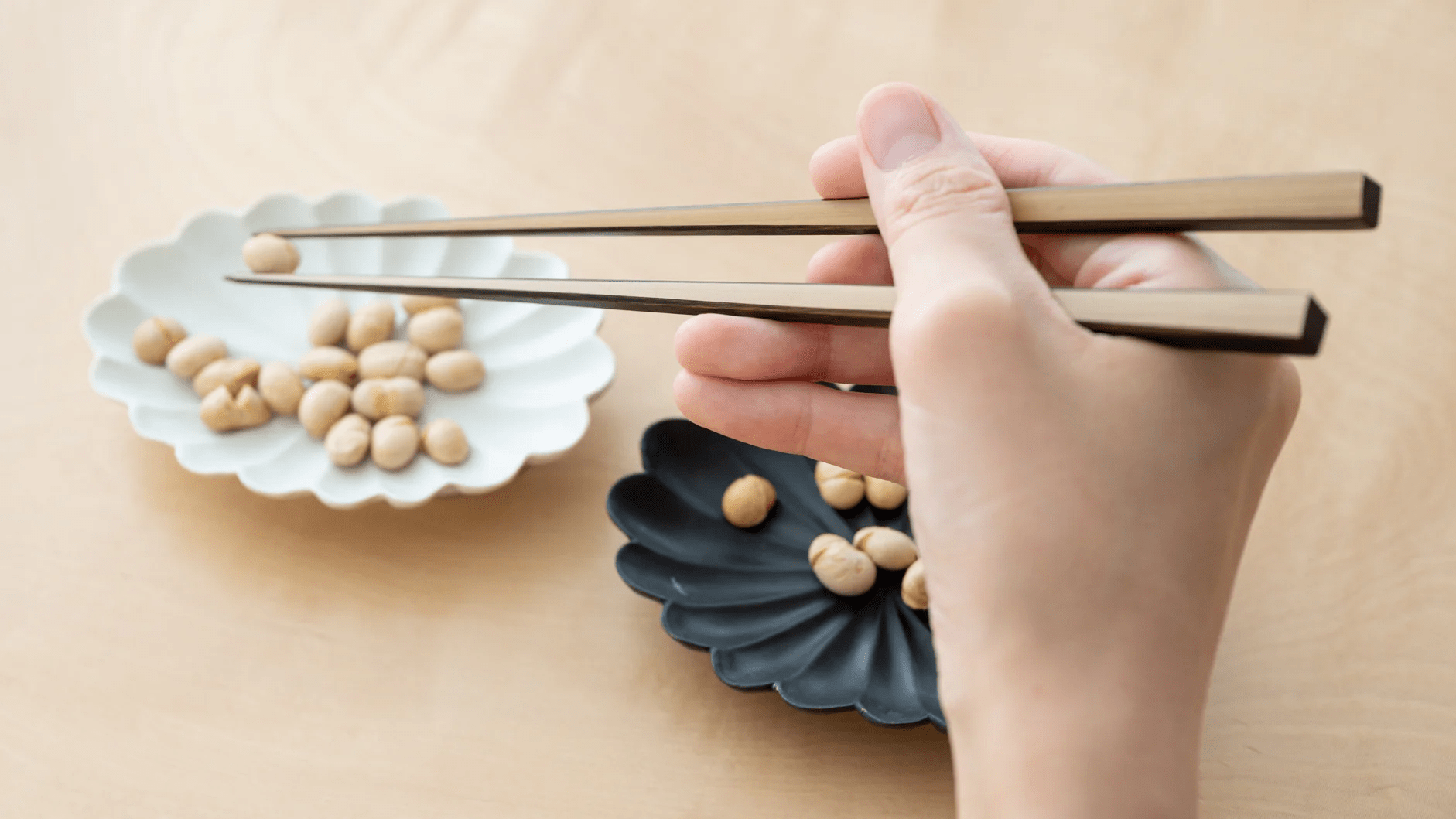
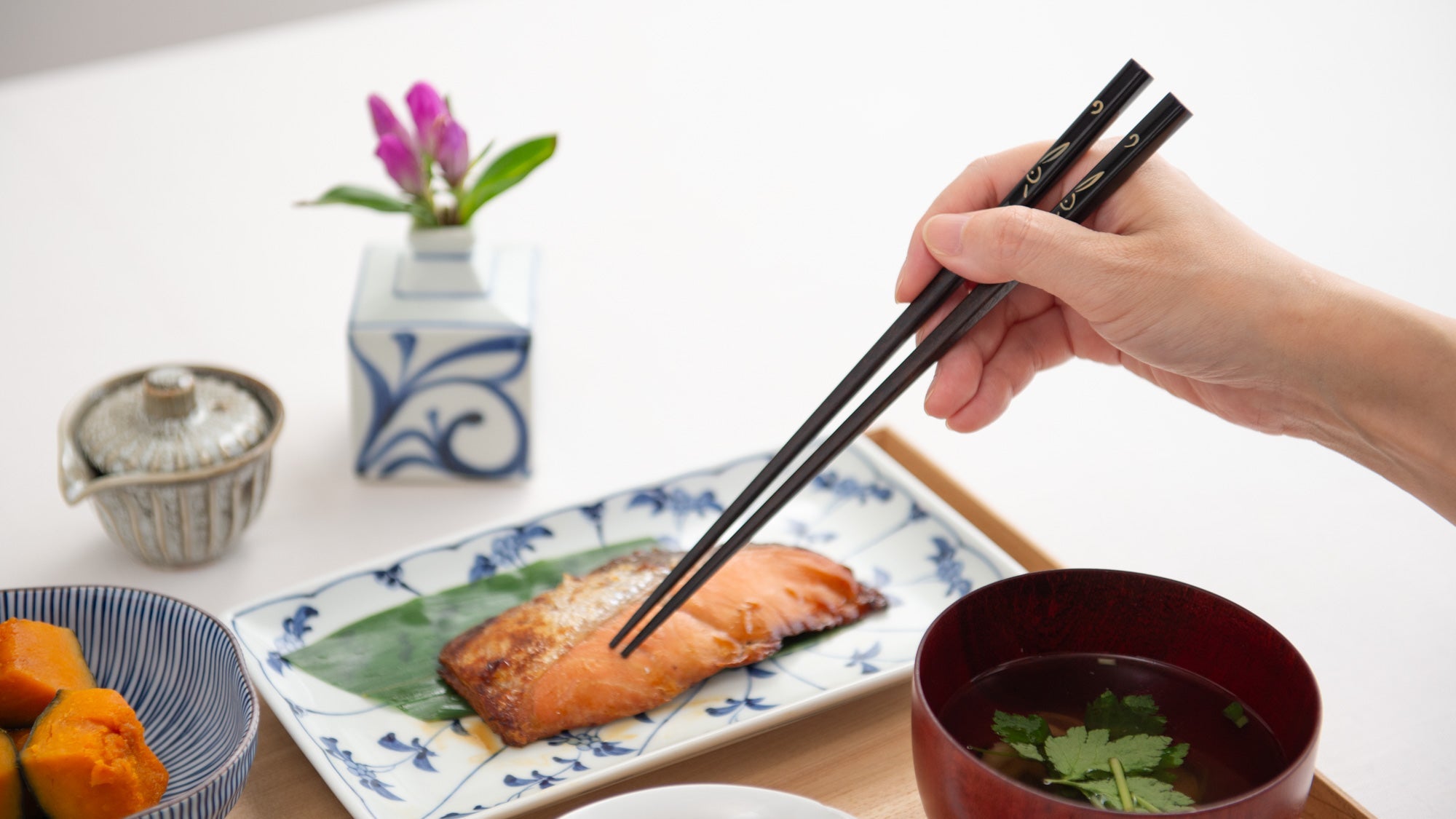

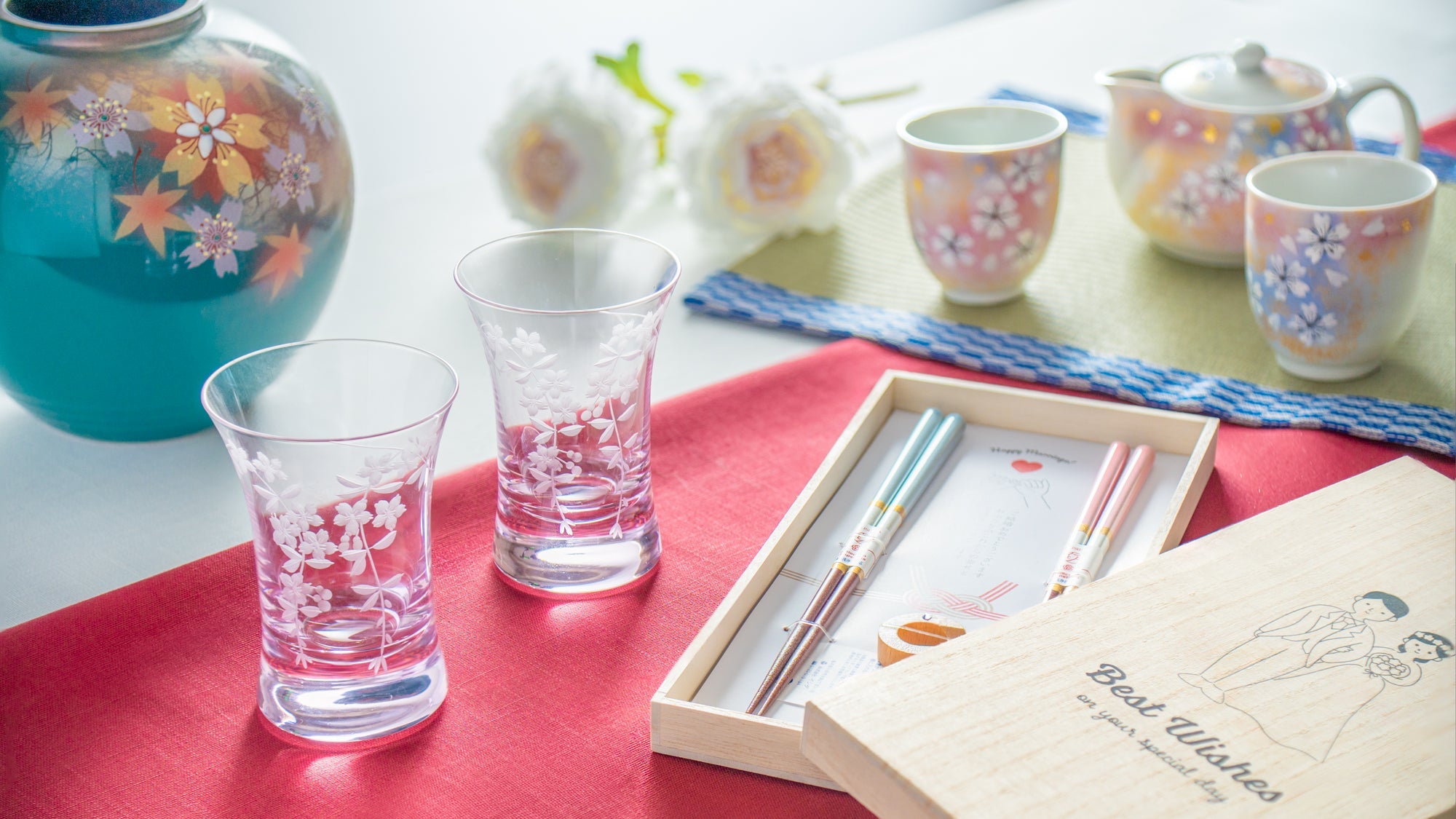
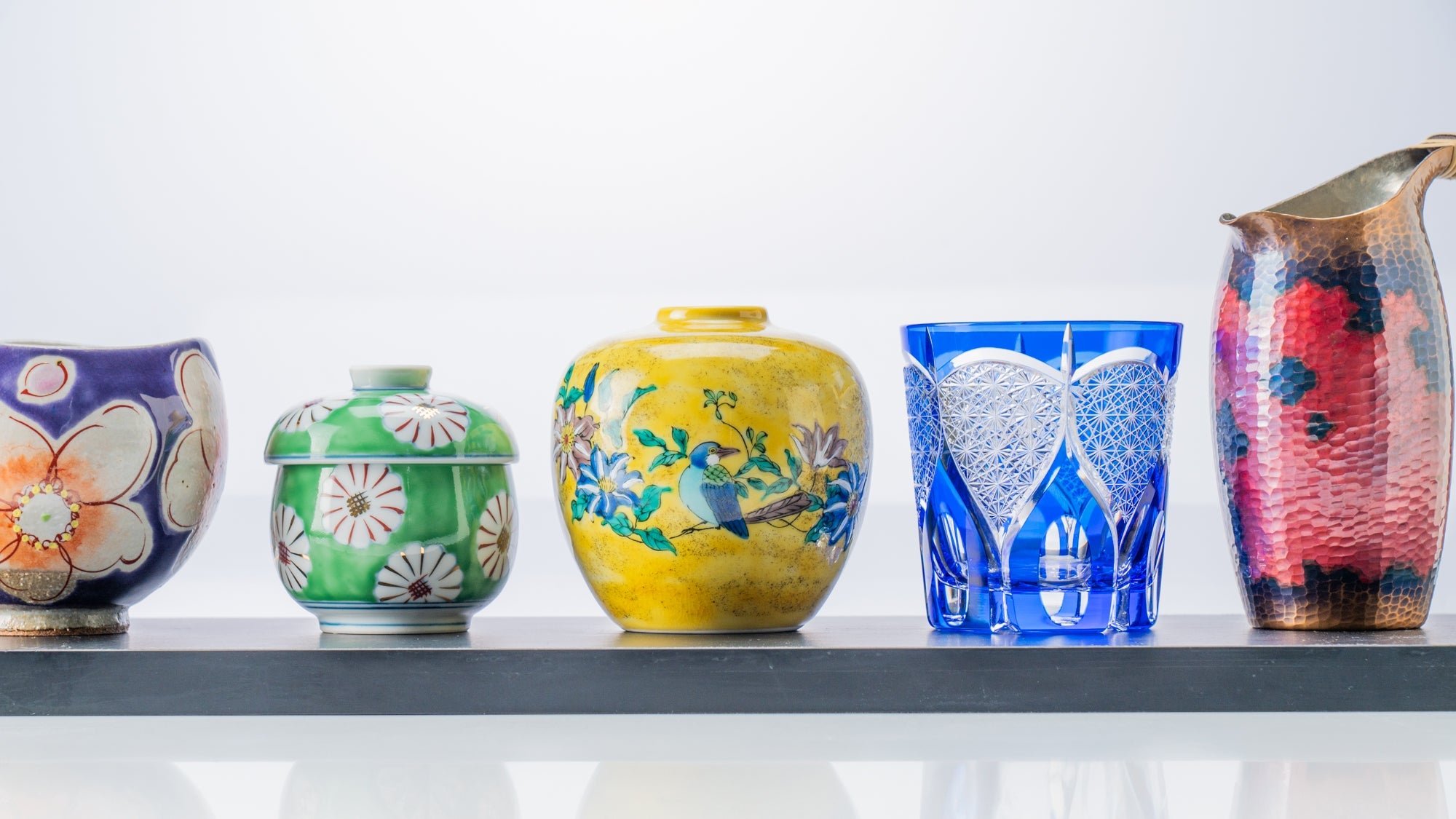

Leave a comment
This site is protected by hCaptcha and the hCaptcha Privacy Policy and Terms of Service apply.